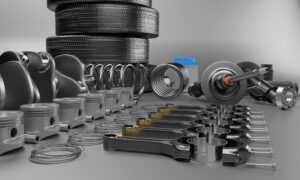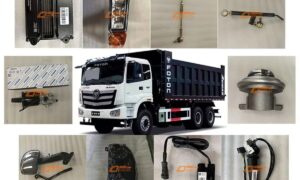The COVID-19 Pandemic has brought with it many challenges for businesses around the world. Globally, the automotive industry has to now integrally change the way it goes about things. With fewer cars on the road, fewer car purchases, and factory closures beginning to define what it is to be in business with the automotive industry, how can these companies ensure they belong in the post-COVID-19 world? Here are four ways companies can adapt their techniques to make sure they can continue gaining profit in what has become a declining economy.
Online Sales
As most businesses, shops, and companies have done, moving online has been the best move for many during the COVID-19 pandemic. Going through three national lockdowns in the UK alone, the economy has undoubtedly suffered. However, moving online ensures both customers getting their purchases and not losing faith in the company and, of course, profit for the business. Using online websites to purchase a range of different services and products have increased by around 13 percent. Of course, before the pandemic, certain services could already be purchased. For example, customers could buy tyres and such online. But, since the pandemic, more of the automotive industry must adopt an online approach to stay afloat.
Germany has seen a 28 percent increase in direct response to the pandemic. In Germany, 72% of first-time buyers plan to use online services after the pandemic is over. Therefore, moving online, or, at least, having an online presence, is growing increasingly integral to the success of a business in the current climate.
Rethinking Old Strategies
One of the first places to start when preparing for future investments is to look meticulously at all business aspects. The reason for this is to see if there is space for the business to grow in it. Using new digital ways of working can dramatically lower costs and improve overall efficiency. In return, this ensures funds can be used on CASE projects and strengthens a business’s ability to withstand swings in the business cycle.
Adding a digital edge to the manufacturing side of things, however, has had a slow start. Around four in ten manufacturers have not yet experimented with intelligent technology, while only three in ten are in the early stages. The problem with adoption is that it is difficult to determine the return profit companies can get on investments in these technologies.
A few automotive companies have, for instance, being able to demonstrate their returns on investment. This has been achievable because of product quality improvements and equipment downtime reductions.
Therefore, it is integral that an automotive company uses digital solutions that can offer significant improvements throughout the business, not subject to the factory floor. By increasing automation and ensuring all areas, including finance and human resources, all adopt a digital approach to promote a sense of continuity across all sites. Examples of these areas are such sections as finance and human resources. PwC predicts that 45 percent of the current workforce tasks can be automated. If this is done globally, it could save more than $2 trillion.
Recurring Revenue Streams
Because of the recent pandemic causing economic decline throughout almost all areas, major stock indexes dropped by around 40% between February and March 2020. So, when people are already frightened for the future, big up-front purchases will be scarce. Henceforth, customers prefer the more short-term approach to buying automotive, including monthly subscriptions that do not require up-front costs, which many people do not have.
Besides, on-demand mobility is slowly increasing. COVID-19 has brought with it the trend of flexibility, meaning customers are apprehensive about making significant investments. In response to this, rental companies now offer short-term rentals instead of outright car sales.
Zero-Based Income Statements
Declining by almost 20 and 30 percent in 2020, car sales around the world have been directly impacted by the COVID-19 pandemic. However, this impact is not only short-term as, depending on the country, but it could also take around four years to get back on track even after the pandemic has long gone. Managing a company’s profit and loss statements is henceforth the next place to look. This is because so many employees are now working from home or finding themselves in short-term employment through the inclusion of flexible-work locations, savings through reductions in workplace fees. Annually, this means that companies will spare a lot of money through this reduction. In response to this, automotive companies should use a zero-based budgeting approach. After this, they should rebuild their statements used for income and profit based on the difference.
Using this approach can achieve so much. For example, it can cause changes in the automotive industry which have needed to be brought about for years. For instance, the consolidation of production facilities can be established, and analysis and eradication of certain elements add little to no value. In addition to this, using zero-based income statements can reduce investments in noncritical assets.
Strategic Partnerships
As all automobile technologies are challenging for all suppliers, it makes more sense for industries to collaborate instead of competing independently. As an example, the smartphone industry has successfully collaborated with other partners. Two globally known, previous rivals announced a deal that meant that the music and TV streaming service could integrate. What happened was that one of the services looked again at its first hardware-first approach and collaborated with third parties to improve and increase its content and revenue streams. As an example, it made its content libraries visible to a competitor’s service, only increasing collaboration between brands. Now competing more successfully, these technology giants are no longer competing but working together and generating more income.
The automotive industry, however, needs to work similarly. OEM’s and suppliers have been known to hold large-scale discussions and debates about their specific technology investments while they try to ensure they can exist in the post-COVID-19 world. Those businesses which are successful are the ones that have collaborated with other companies. This, in turn, has made these types of collaborations more desirable and, subsequently, more popular. Indeed, during the past decade, the number of ACES partnerships has increased by 40.
Conclusion
In conclusion, the COVID-19 pandemic has undoubtedly catalyzed the downfall of many automotive businesses and companies. However, there are many ways in which they have and can achieve success through adopting different approaches. Firstly is the move to online sales. It has been found that, in recent years, more and more non-automotive companies have taken the plunge. However, it seems that automotive companies can adopt the same approach. By moving their sales online and moving in the same circles as every other company during the pandemic, success can be catalyzed. Besides, using this time to rethink strategies used on the factory floor and throughout all business areas is integral to ensuring there is room for it to grow. Besides, recurring revenue streams, zero-based income statements, and collaborations with different rival companies are ways in which the automotive industry has been trying to stay on the road during the COVID-19 pandemic.



































